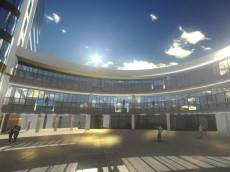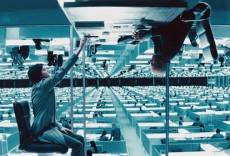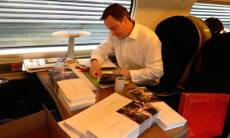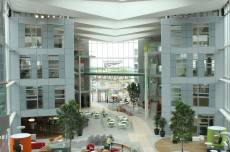November 8, 2013
Latest Insight newsletter is now available to view online
In the latest issue of the Insight newsletter available to view online; Smartglasses look set to become the next Bring Your Own Device (BYOD); office construction in the City of London higher than it has been for five years and the winners of a competition to uncover the “Workplace of the Future” are announced. We’ve an exclusive interview with journalist and urbanist Greg Lindsay, a key speaker at the Worktech 13 conference, along with columnist Philip Ross who explains why data will transform the role of workplace. Debra Ward, Chair of Women in FM questions why companies choose not to ensure gender balance in senior positions and Pam Loch offers advice to managers on what to do when a social media fixation threatens staff productivity.














 The finest closing sentence of any novel in my opinion is that in The Great Gatsby. “So we beat on, boats against the current, borne back ceaselessly into the past.” It is a reference to the futility of our attempts to escape the past, even as we look to the future, dreaming of how “tomorrow we will run faster, stretch out our arms farther”. F Scott Fitzgerald was referring to people when he wrote it, and Jay Gatsby in particular, but it’s a passage that resonates in a number of ways, especially in those areas of our lives that deal most intimately with what it means to be human. And one of these is self-evidently the workplace, where any articular attempt to define the ideal office for a particular time, including the future, is complicated by the fact that we must always meet the needs of the beasts that inhabit it. Regardless of the tools we have at our disposal with which to work more effectively, or just plain ‘more’ we remain fundamentally the same animals we were thousands of years ago.
The finest closing sentence of any novel in my opinion is that in The Great Gatsby. “So we beat on, boats against the current, borne back ceaselessly into the past.” It is a reference to the futility of our attempts to escape the past, even as we look to the future, dreaming of how “tomorrow we will run faster, stretch out our arms farther”. F Scott Fitzgerald was referring to people when he wrote it, and Jay Gatsby in particular, but it’s a passage that resonates in a number of ways, especially in those areas of our lives that deal most intimately with what it means to be human. And one of these is self-evidently the workplace, where any articular attempt to define the ideal office for a particular time, including the future, is complicated by the fact that we must always meet the needs of the beasts that inhabit it. Regardless of the tools we have at our disposal with which to work more effectively, or just plain ‘more’ we remain fundamentally the same animals we were thousands of years ago.









November 5, 2013
Technology fix. What employers can do when social media becomes an addiction
by Pam Loch • Comment, Legal news, Technology, Workplace
Recent research shows that technology has helped us to become nearly five times more productive than we were in the 1970s. As well as enabling social interaction and personal expression, social media such as LinkedIn and Twitter can be valuable business aids for innovation and collaboration. However, with over half of people under 25 admitting they have to check Facebook at least once a day, it’s clear that for many, social media has become more than a form of virtual engagement. This can create something of an issue in the workplace, leaving employers with the dilemma of balancing the positive aspects of online communications while discouraging time wasting. (more…)